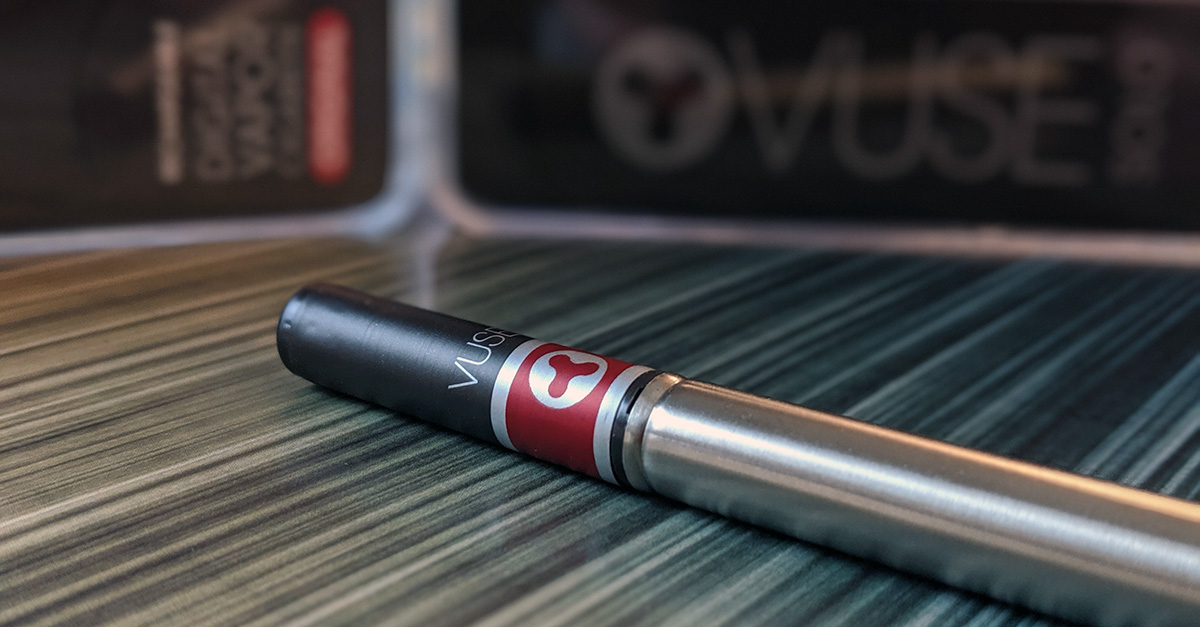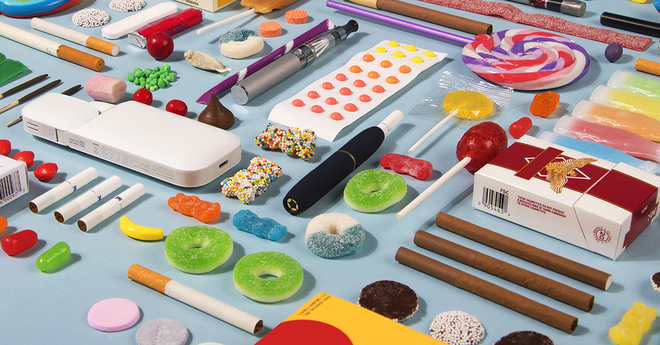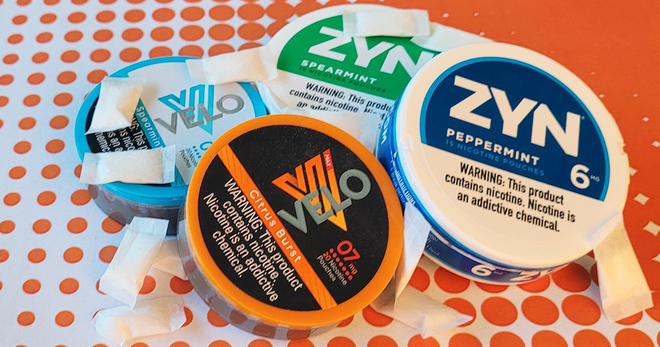Key concerns about FDA’s first e-cigarette authorization for Vuse Solo
In its first authorization of an e-cigarette product, the Food and Drug Administration announced that Vuse Solo, made by R.J. Reynolds, can continue to be sold in tobacco flavor, but it denied 10 unspecified Vuse Solo flavors and made no decision on its menthol e-cigarette. While this action marks a step forward in the long-delayed review of e-cigarettes, it’s important to note that Vuse Solo has no significant market share, according to Nielsen sales data as of June 2021. Vuse Alto, the brand most competitive to market leader JUUL, accounts for nearly 95% of Vuse sales and remains on the market without FDA authorization. The decision raises important concerns about continued youth use (Vuse, presumably the popular Alto version, is the no. 2 e-cigarette brand used by high school students), high nicotine levels, and whether these products will help smokers quit combustible cigarettes. The authorization of Vuse Solo also permits it to be marketed fairly broadly, including via online sales, TV, digital and social paid advertising, the use of influencers and at youth-centric live events – tactics that are restricted for cigarette and smokeless tobacco brands.

E-cigarettes have been allowed to stay on the market for years without undergoing a review of their public health impact, sparking a sustained and ongoing epidemic of youth use. On September 9, 2021 the FDA finally faced a court-ordered deadline to review millions of premarket applications (known as PMTAs) from e-cigarette manufacturers to determine whether the products are “appropriate for the protection of public health.” The move to authorize Vuse Solo comes after the agency denied the applications of nearly a million flavored products. However, FDA has yet to complete PMTA reviews from the largest companies with the most popular products that make up over 75% of the e-cigarette market, including Vuse Alto. It is perplexing that FDA chose to issue its first authorization for a product with very minimal sales, but delayed taking action on a “sister” product with significant market presence.
The decision, which does not mean the products are safe or “FDA approved,” indicates that the agency determined tobacco-flavored Vuse Solo has potential to benefit public health by helping smokers transition to a product that reduces their exposure to harmful ingredients. This is an important distinction: reduced exposure and reduced harms are not the same thing, meaning exposure to fewer toxic ingredients, especially in the context of dual use of both e-cigarettes and combustible products, does not necessarily mean lower levels of harm when people use the product. The Surgeon General has stated that there is no safe use of combustible tobacco. However, the Vuse Solo authorization suggests the FDA considers the use of both e-cigarettes and combustible tobacco acceptable when we know that “cutting down” is not an effective harm reduction strategy and that dual use can inhibit attempts to fully quit smoking. Serious concerns also remain about youth use, which is still at epidemic levels, and the burden a new generation of nicotine users may face with the challenges of addiction, for themselves and society.
Here is a closer look at key concerns about the FDA’s first e-cigarette authorization and the impact it may have on future decisions.
Denials of certain flavors are promising, but no news on menthol is a concern
While the FDA took the important step of denying some non-tobacco flavors of Vuse Solo, the agency has still not made a decision on its menthol flavors.
Flavors, including menthol, play a huge role in initiating and ultimately addicting young people to tobacco products and menthol flavored e-cigarettes are now one of the most popular flavors among youth. Many young people have switched to menthol as other flavors have become harder to come by. For example, the market share of menthol e-cigarettes more than doubled in 2020 after it was exempted from federal restrictions that removed some flavored e-cigarettes from the market.
Truth Initiative has long called on the FDA to remove flavors from all tobacco products, including menthol cigarettes and e-cigarettes.
Marketing restrictions leave gaps
While the FDA included marketing restrictions for Vuse Solo, with several important requirements that attempt to ensure that the company’s digital marketing is only targeted to adults, the restrictions fall far short.
The FDA did not institute some of the same marketing restrictions that are placed on cigarettes and smokeless tobacco. These include tactics such as prohibiting sponsorships, holding live events like launch parties, appearing at youth-centric events like music festivals, and distributing the products as virtually free samples (for example, only charging $1).
Mass advertising is also allowed, including on television and radio – places where cigarettes have been banned for decades. Broadscale digital advertising is still permitted too, along with the use of influencers, celebrities, and athletes, which are not expressly prohibited.
Internet sales and broad retail access are still allowed
The Vuse Solo authorization also permits internet sales with age verification. While strong age verification tools help in reducing underage access, it has been demonstrated that young people are often able to circumvent even strong safeguards. That is why Truth Initiative has long urged FDA to prohibit internet sales of all tobacco products, including e-cigarettes, and that authorization of e-cigarettes should be accompanied by strict requirements that restrict access to adult smokers, including selling e-cigarettes in face-to-face, adult-only retail spaces.
The decision does not address nicotine levels
Disappointingly, FDA’s decision on Vuse Solo keeps a high-nicotine product on the market and does nothing to address the issue of high nicotine content or nicotine delivery. The Vuse Solo authorized by FDA contains a 4.8% nicotine level similar to other popular brands among youth, including JUUL, and is more than double the level allowed in other countries like the UK, the EU, and Canada. The average nicotine concentration in e-cigarettes sold in U.S. retailers more than doubled from 2013 to 2018, according to a study by Truth Initiative and Centers for Disease Control and Prevention researchers.
The FDA must limit nicotine in e-cigarettes by capping nicotine strength and delivery as is done in the in other countries. (Nicotine delivery impacts the amount of nicotine consumed, which is affected by nicotine level, other ingredients, and the technology in the e-cigarette device.) If left unchecked, nicotine content will continue to grow, potentially making products increasingly addictive.
Dual use remains a concern
Using more than one tobacco product, or dual use, does not benefit public health. While some combustible tobacco smokers may experience a brief period of dual use in the process of switching to e-cigarettes, dual use can be just as harmful, and sometimes more harmful, than regular cigarette smoking.
Because there is no safe level of smoking, there are concerns that this behavior suppresses efforts to completely quit smoking (people choosing to “cut down” instead of quitting smoking entirely). “Cutting down” is not an effective harm reduction strategy and dual use can inhibit attempts to fully quit smoking. This is a strategy the FDA should not endorse when considering “benefit to the public health.”
We are still awaiting decisions on the most popular e-cigarettes
The FDA has yet to announce decisions on the most popular Vuse products, as well as leading brands JUUL, blu, Logic, and NJOY which comprise over 75% of the retail market. Since the review deadline has passed, these brands continue to be marketed illegally and remain widely available.
We will continue to call on the FDA to prioritize enforcement against unauthorized flavored e-cigarettes, including menthol, with the largest market shares and products with the highest prevalence of youth use.
We need a re-imagined and carefully regulated harm reduction approach
The authorization of Vuse Solo highlights the ongoing need for a regulated approach to harm reduction. It should transform the current market from being widely available, lightly restricted, commercialized as a consumer recreational product to being more restricted and carefully targeted to smokers who will use them to 100% switch from combustible tobacco. Ideally, it should eventually cease the use of all tobacco products.
Smokers who will not quit nicotine should have less harmful alternatives, but we cannot allow a huge commercial market of addictive nicotine products focused on growth and the acquisition of new users, most of whom are youth and young adults. We need a genuine harm reduction approach with a measured and careful deployment of nicotine alternatives that are tightly focused on helping smokers who otherwise would not quit smoking cigarettes.
As the FDA considers the pending applications, it is imperative the agency carefully reviews manufacturer marketing plans, advertising, and perception studies to confirm the products do not appeal to youth or new users. This should include research confirming lack of appeal among young people. Any marketing authorization should be followed up with post-marketing surveillance to confirm the product has not attracted youth users.
More in emerging tobacco products
Want support quitting? Join EX Program
By clicking JOIN, you agree to the Terms, Text Message Terms and Privacy Policy.
Msg&Data rates may apply; msgs are automated.


